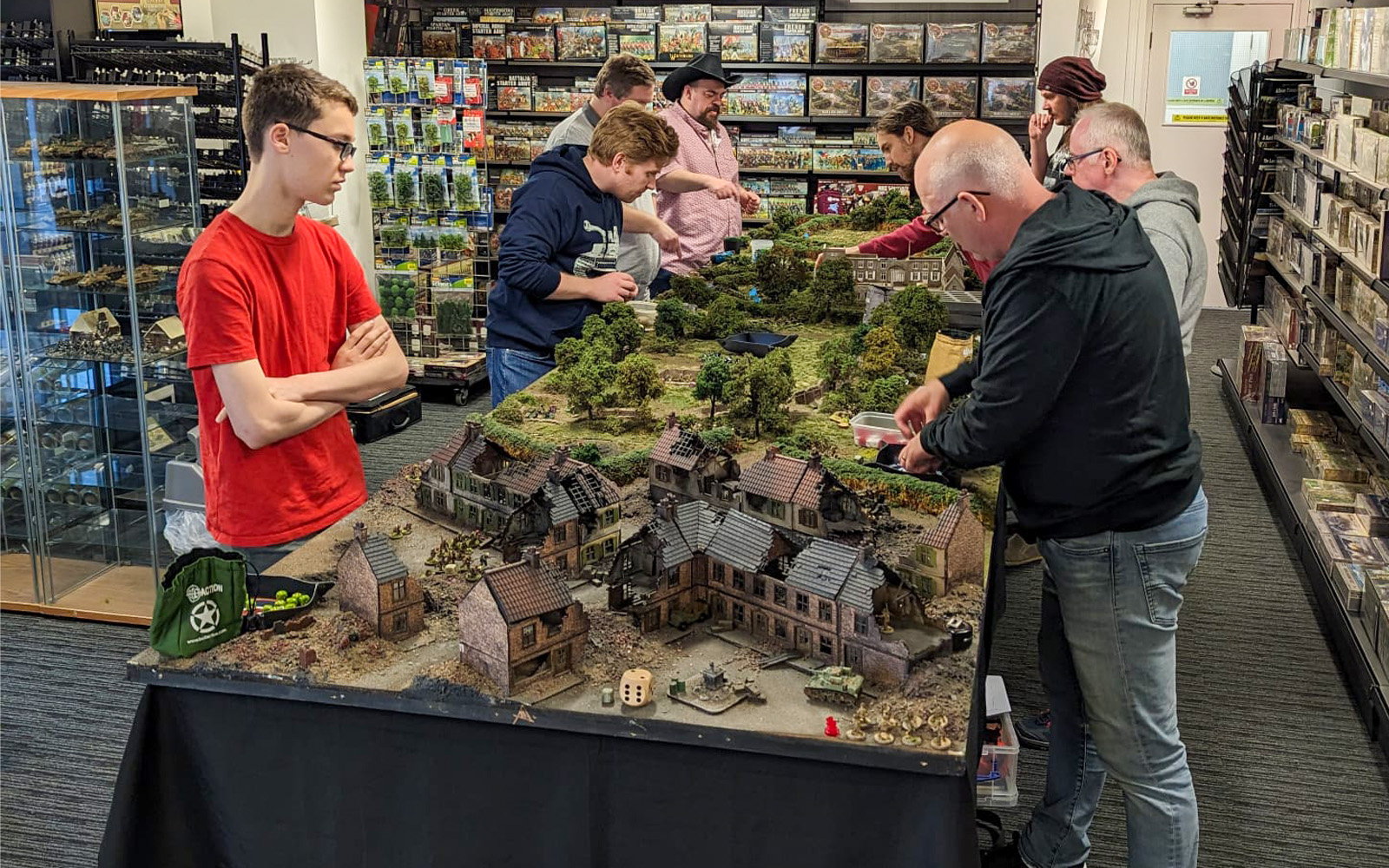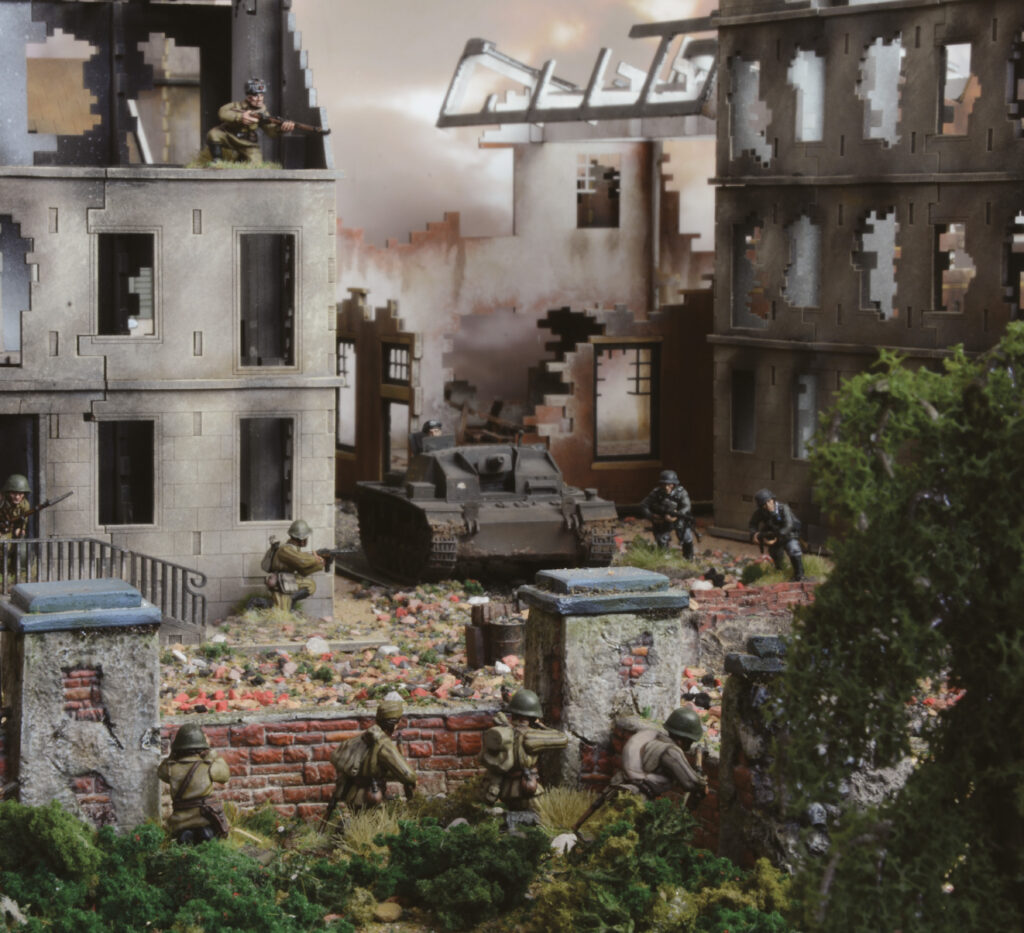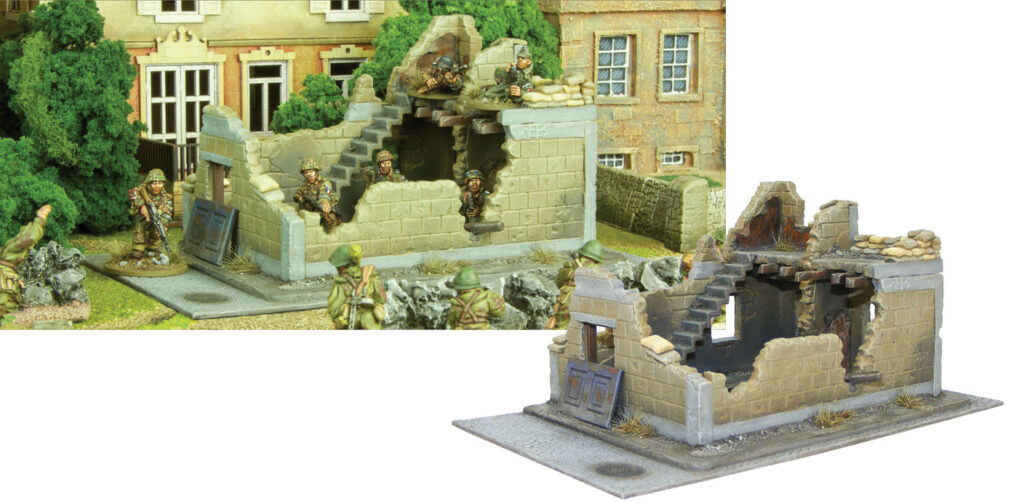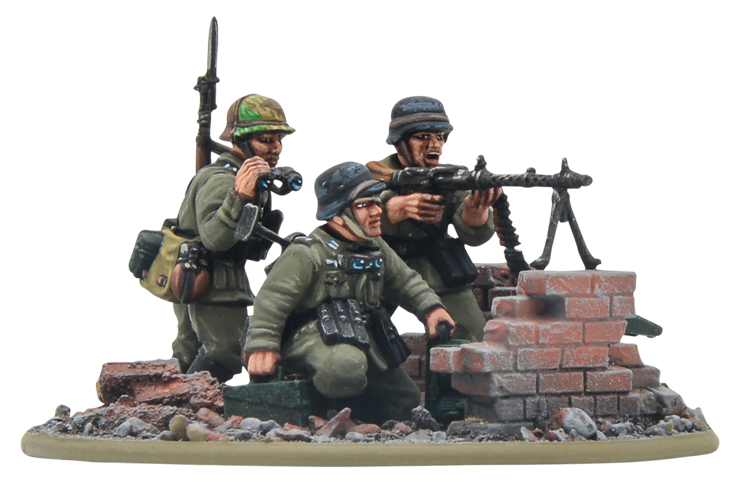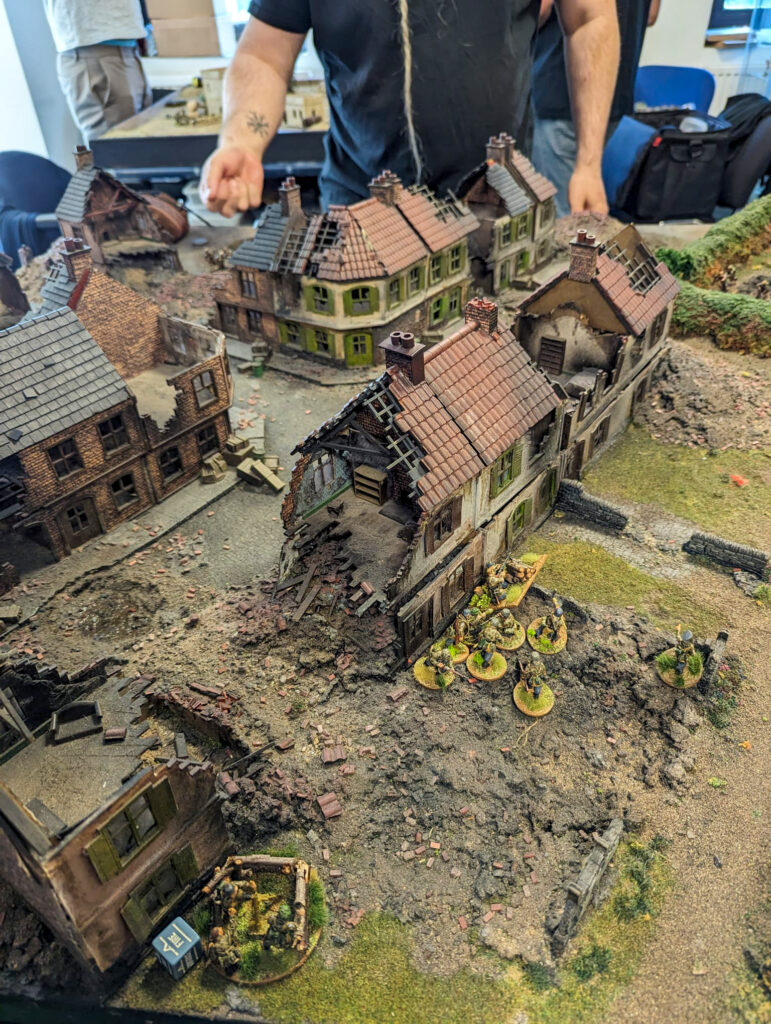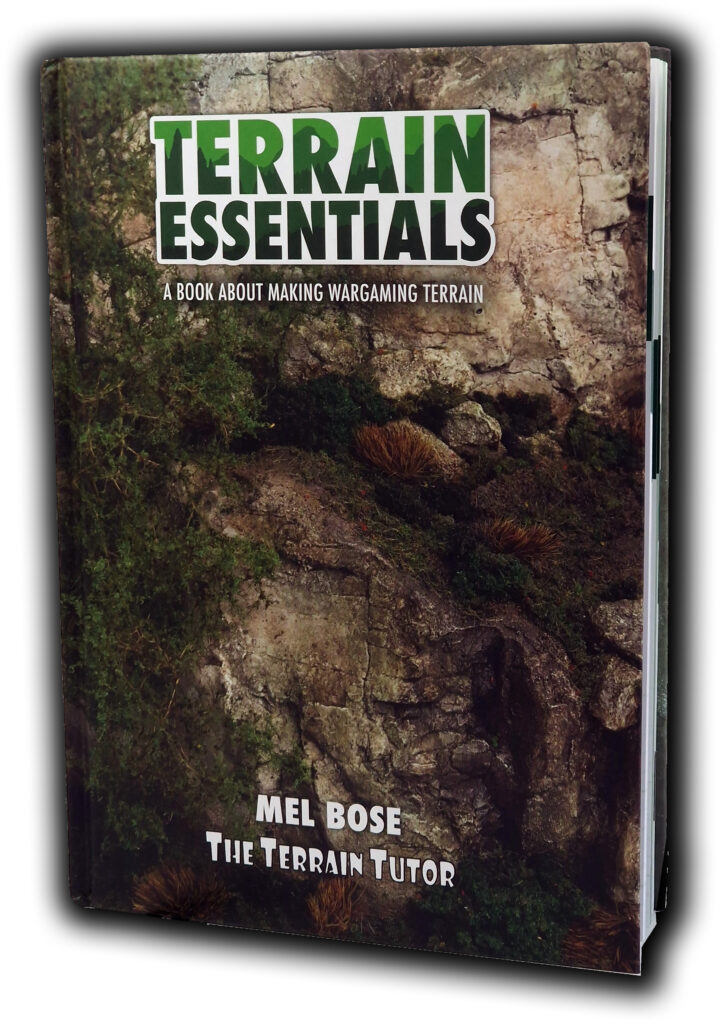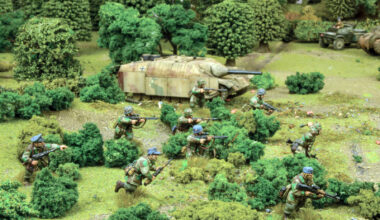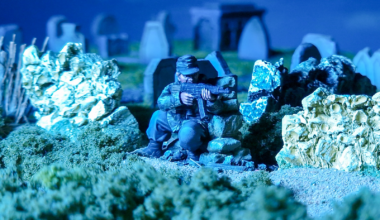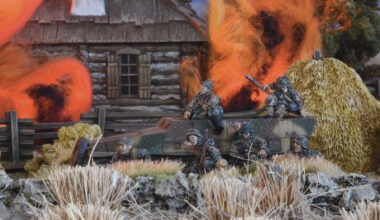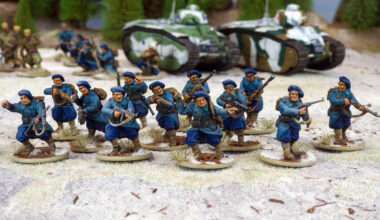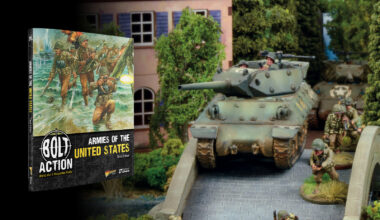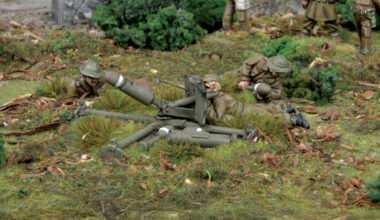Geofry Kristoff of Dice Hosers in Canada has a deep love for terrain, and has penned this missive about why, in addition to making your table look fantastic, it’s more important than ever in Bolt Action: Third Edition. What’s on your mind, Geof?
Terrain is what got me hooked on Bolt Action, and therefore I likely tend to think about it more than the next person! Prior to discovering Bolt Action I spent my hobby time working on military dioramas, painting military miniatures in 54mm, and playing all sorts of strategy board games. A friend of mine suggested I try Bolt Action, as it would allow me to combine both of my interests into one hobby! I remember going over to his house for a demo game and walking into his basement where he had a table set up that is still probably the most beautiful table I have seen to this date. It was a full city board laid out in an entirely believable fashion. There were small details, houses had back gardens, there was a church and a cemetery, and I felt so immersed in the city and ultimately that first game that I was hooked. My soldiers were jumping over picket fences, peering out from behind crates, and charging into combat across an open street.
I picked up a British starter army, Sherman Firefly, a box of Red Devils, and I was off to the races. To this date, whenever I demo a game to new players, I make sure to bring out the best terrain I have available at that moment in an effort to really draw them in. I do want to make it clear though that I have also played games on my floor around various sizes of shoe boxes and had a blast. You do what you have to do, and I think the most important thing to do is just get out and roll some dice!
Prior to the release of Bolt Action: Third Edition, I had actually spent most of my hobby time over the previous year making terrain as I felt that I had a decent variety in different forces to play with and I wanted to expand my ability to host games. This led to me spending a lot of time thinking about the impact terrain has on Bolt Action. Whether it’s professionally produced houses, or simple shoe boxes, their placement on the table matters. Spoiler alert, I think it matters even more in Third Edition!
Imagine for a second a table devoid of terrain. If you attempted to play Bolt Action on a table like this, your army would enter the battle on one side, your opponent would arrive on the other, and everything else being equal you would trade shots with each other and the person who rolled the best would ultimately win. Somewhat simplistic, I know, but a game like that favours luck over any type of tactics and I feel there is a direct correlation between the amount of terrain on a table and the balance you strike between luck and tactics. Any time you play a game with dice there will always be an element of luck, but the placement of terrain on the table allows units to move around on the battlefield with the element of cover, and strategic use of that cover could mean the difference between a loss and a victory – that’s what we want to see.
Bolt Action is set in a period where tanks could exploit breakthroughs, light reconnaissance vehicles scouted far ahead of the main force, and small squad tactics were central to the doctrine of fire and manoeuvre. The ability to move quickly was paramount. Gone were the days of simply advancing in line, firing, reloading, and repeating. Soldiers made the most of cover with even a shallow fox hole potentially being the difference between life and death. There is no right or wrong answer to the question of how much terrain one should use for a game of Bolt Action. There are some guidelines in the rulebook, but in the end it’s up to you – just know that your decision may impact the balance between luck and tactics, and can dramatically alter the way a game feels. It’s all about making the game work for you.
So ,why do I think that terrain is even more important in Third Edition? It’s mostly due to the shooting mechanics and the impact I have seen them have on gameplay. In Second Edition there was not a lot of shooting at range. This was due to the difficulty of even getting a hit, particularly with the penalty for the target being ‘over half range’ away, and meant that you would often need a 6 followed by a 6 just to inflict any pin markers. In competitive terms, it simply meant that long-range shooting wasn’t very points-efficient at all!
In Third Edition there is no longer a penalty for firing at a unit at Long Range. There is no longer a penalty for firing at a Small Team. Whether or not the unit is in Cover is dealt with in Cover Saves and no longer has an impact on the roll needed to hit. This means that doing damage to units at long range on Turn 1 is now a very real prospect! Target that nasty little Forward Observer just waiting to call in an Artillery Strike. If you’re using an MMG, that is now six shots you are firing (or seven with Germans!), hitting on 4+. Odds say you should connect on three of those. If it’s a Regular unit you wound on a 4+ so again, odds say you should force at least one Cover Save. At the bare minimum you’ve forced a pin marker. Compare that to needing that 6s followed by 6s last edition, and you can see how much more effective it is, and coupled with points reductions to LMGs and the fact that Snipers can no longer destroy MMGs in a single shot, there’s a lot more automatic firepower around!
So how does this relate to terrain? With units being able to exchange shots at range, and effective shots at that, a game could quickly devolve into a long range static firefight if we’re not populating our tables with plenty of line of sight blocking terrain to allow our troops to move up. We also want plenty of light and heavy cover, as units caught in the open die very quickly in Third Edition.
By setting up line of sight blocking terrain, and lots of it, we can also ensure that the ‘manoeuvre portion’ of fire and manoeuvre remains in the game. I know that Close Quarters combat appears to now be a risky proposition, but it’s still a lethal way to get rid of enemy units if you get it right, and Point Blank shooting is deadlier than ever, so players need to be provided with terrain around which to manoeuvre in order to get into these prime attacking positions. With long range shooting now being a viable way to whittle down your opponent, a game with no line of sight blocking terrain would be quite similar to the theoretical example I proposed above of a game without any terrain. If you can hit your opponent wherever they are on the board and vice versa it becomes less a game about tactics and more just a game based on luck. Fill those tables with buildings, high walls, dense forests, and huge rubble piles to give your soldiers a safer place to hide before moving on to their next position, and you’ll find your games becoming tighter, more action-packed, and satisfying!
~Article by Geofry Kristoff
MV – Has Geofry got you wanting to jazz up your tables and add to your terrain collection? You can pick up all manner of top tips and tricks from Mel Bose’s seminal Terrain Essentials to help you build all manner of amazing scenery, and we’ve got the buildings, foliage, accessories, and more to let you bring your battlefields to life and improve your Bolt Action experience. Let’s get building!
